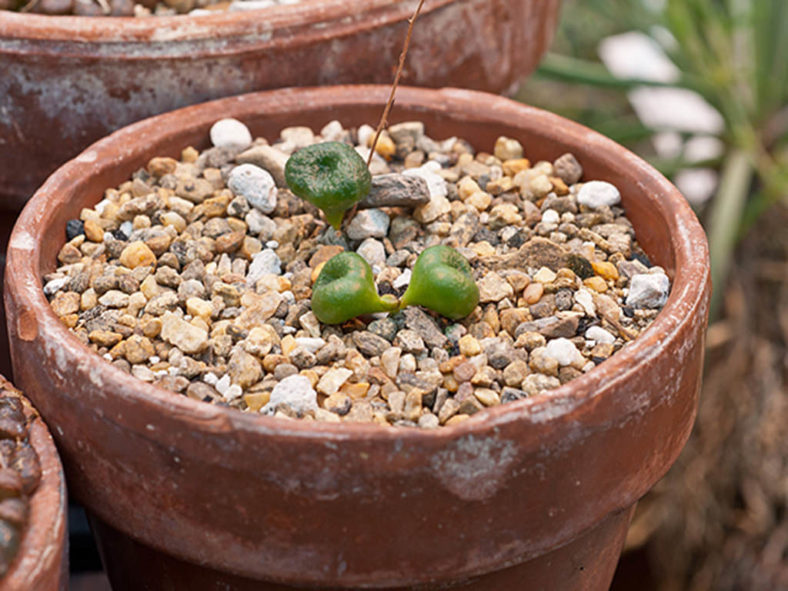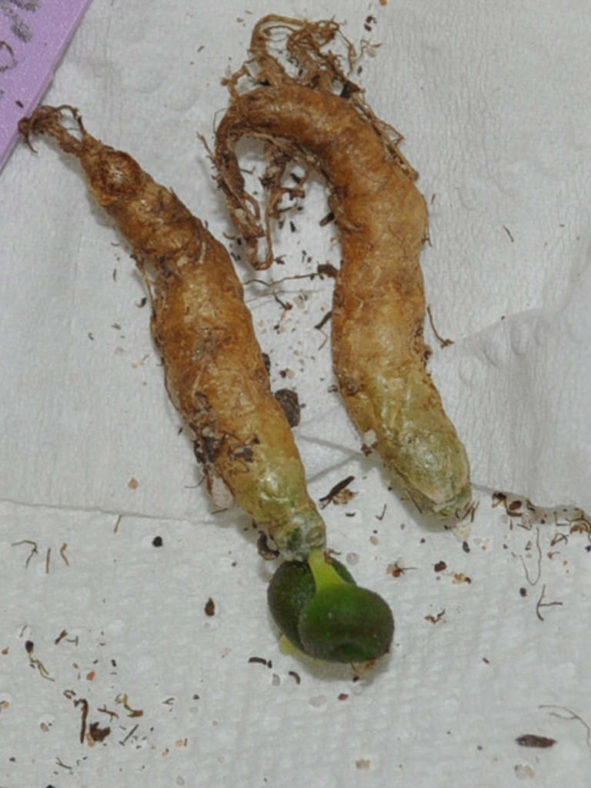Scientific Name
Tylecodon opelii van Jaarsv. & S.A.Hammer
Scientific Classification
Family: Crassulaceae
Subfamily: Kalanchoideae
Genus: Tylecodon
Etymology
The specific epithet "opelii (oh-PEL-ee-eye)" honors Dr. Matt Opel, a botanist from UConn who discovered this species.
Origin
Tylecodon opelii is endemic to fields of broken quartz in northern Knersvlakte in the Western Cape Province of South Africa.
Description
Tylecodon opelii is a dwarf geophyte with pale grey-brown, somewhat flaking tuber and usually solitary (rarely up to 3) dark green to nearly black, almost glabrous leaves with just a few fine hairs. The tuber is oblong and can reach up to 1.4 inches (3.5 cm) in length and 1.6 inches (1.5 cm) in diameter. The leaves are thick, fleshy, marble- to club-shaped, with both surfaces slightly shining. They can grow up to 0.6 inches (1.5 cm) long and nearly equal in diameter. The lower surface of the leaves is flushed beet red.
The flowers are cylindrical to slightly funnel-shaped, maroon-green, and appear in summer when the plant sheds its leaves. They can reach up to 0.6 inches (1.5 cm) in length.

How to Grow and Care for Tylecodon opelii
Light: This succulent can survive direct sunlight exposure without problems, but it will grow beautifully in partial shade.
Soil: A well-draining soil mix is a key to healthy T. opelii. Poor drainage and overwatering most commonly cause root rot in both indoor and outdoor plants. Indoors, it is essential to use pots with at least one drainage hole at the bottom.
Hardiness: Like all Tylecodons, this succulent is highly tolerant when it comes to high temperatures and also tolerant of cold, frost-free conditions during the winter. T. opelii can withstand temperatures as low as 30 to 50 °F (-1.1 to 10 °C), USDA hardiness zones 10a to 11b.
Watering: As a winter grower, T. opelii requires careful watering during winter and spring. Get the soil wet, and then wait until it is dry before watering again. In summer, reduce watering to once per month.
Fertilizing: Use liquid fertilizer for cacti and other succulents during winter.
Repotting: You do not need to repot this plant often. You can do it when the container becomes too small or shallow.
Propagation: Since a plant with a solitary growth habit, T. opelii can be propagated only from seeds. Sow the seeds in fall and winter.
Learn more at How to Grow and Care for Tylecodon.
Toxicity of Tylecodon opelii
T. opelii is adapted to avoid animal predation being poisonous. Therefore, keep it away from children, pets, and livestock.
Links
- Back to genus Tylecodon
- Succupedia: Browse succulents by Scientific Name, Common Name, Genus, Family, USDA Hardiness Zone, Origin, or cacti by Genus
Photo Gallery
Click on a photo to see a larger version.


